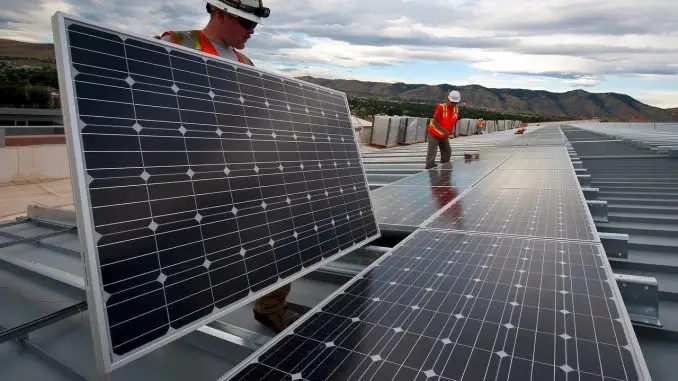
This is how solar panels are used
Today, solar cells are used for residential buildings, villas, businesses, and public buildings. The most common is that you have solar panels on the roof as a supplementary energy source. Abroad, there are also pure solar power plants with photovoltaic modules that are arranged on very large surfaces.
This is how solar cells work
Solar cells are interconnected in larger solar panels mounted on the roof of the property or on the facade. When the sun’s rays hit the solar cells, electrical voltage occurs between the front and back of the cell. By connecting a line between the front and back of the cell, current is formed in the form of direct current. In order for the electricity to be used in the property, a so-called inverter is used which converts direct current into alternating current.
How do solar cells work under clouds and snow?
Solar cells provide the most energy in the summer, but they do not stop producing electricity just because it is cloudy or because there is snow on the roof. So it doesn’t have to be sunny, just bright. On a clear summer day, it is produced as most electricity. Production is highest between March and October. Solar cells convert about 10-15% of the incoming solar energy into electricity.
Solar panels require almost no maintenance
Solar panels require almost no maintenance, as there are no moving components that can cause trouble. The panels do not need to be cleaned because their efficiency is only slightly affected by dirt.
Solar panels do not store electricity
As long as it’s bright, you get energy from the solar cells. When it gets dark, energy production stops. Solar panels have no way to save the electricity you do not use, but you can supplement your panels with batteries to have energy even when the sun goes down. You can also sell your surplus.
By inserting the surplus harness on the electricity grid, you can sell it to an electricity company, which in turn sells the electricity to other electricity trading customers.
Solar cells increase the value of the house
Brokers have already seen the trends, but now it’s black and white: Putting solar cells on the roof increases the value of your house.
Maximum power
Each individual panel has its own optimizer so that it can produce independently of each other. This means that you get the maximum out of your plant and can monitor the electricity production at the panel level.
The panels are mounted on top of aluminum support rails. Based on the roof type, approved roof brackets are used which do not affect the sealing layer.
Solar panels can be installed at different angles. Solar panels can be mounted in different windings, directions and sections where they make the most use of your roof. It also means that there are opportunities to expand the system in the future.
The inverter is the heart of the system. It converts the direct current of the solar cells into alternating current. The more efficient the inverter, the more electricity generation. With a WiFi component in the inverter, you can monitor your electricity production on your mobile.
No matter where you live and which network company you have, you can lower your energy costs by selling your surplus.
Real-time panel-level monitoring gives you full control of how the system performs via your mobile, tablet or computer. You can also compare historically how much electricity you produced during any time period – for example, last year, last summer or last week.
Leave a Reply